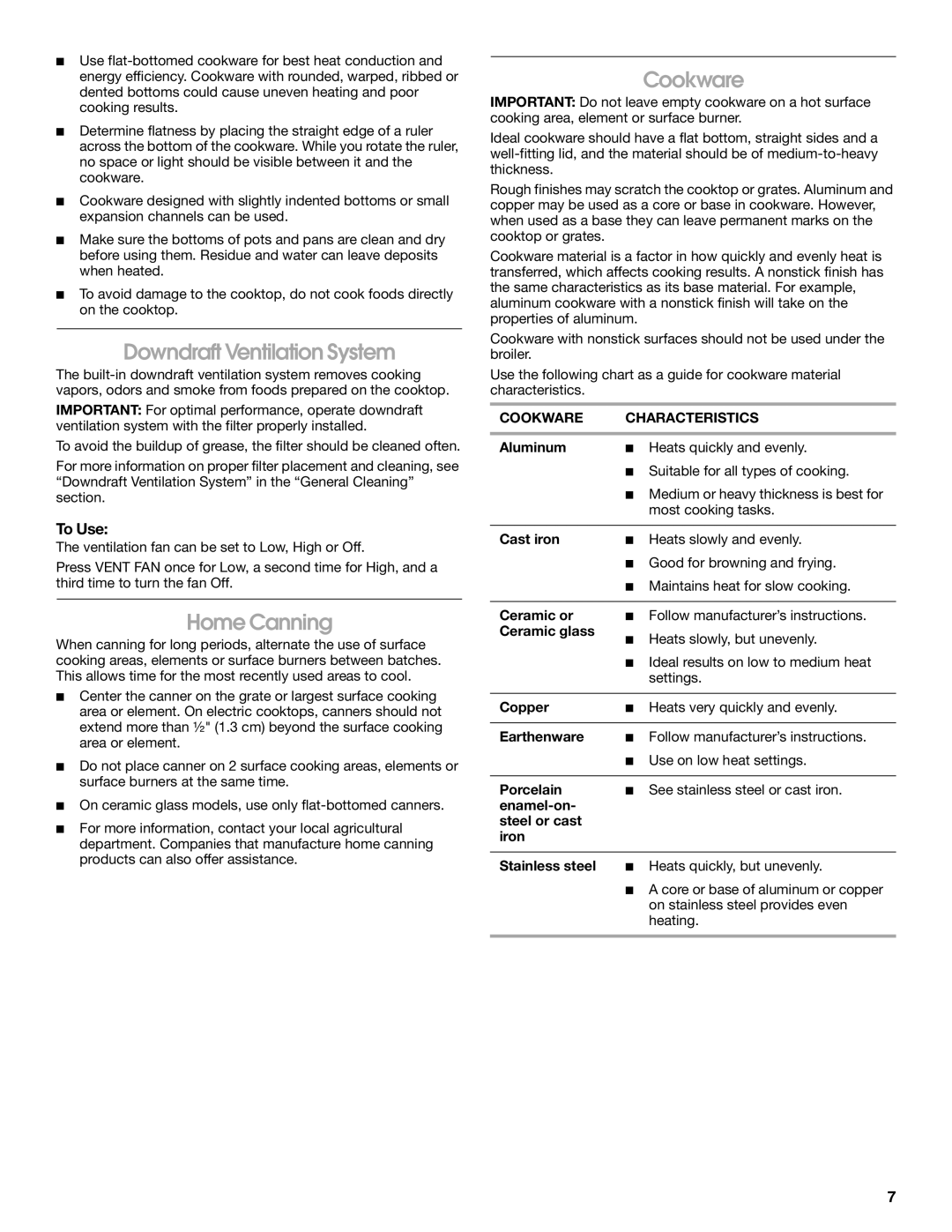JES9800, JES9900 specifications
Jenn-Air, a brand synonymous with high-end kitchen appliances, has made waves in the culinary world with its JES9800 and JES9900 electric cooktops. These advanced cooktops embody luxury and cutting-edge technology, catering to the needs of both amateur cooks and professional chefs.The Jenn-Air JES9800 model boasts a sleek design with a modern ceramic glass surface that not only looks elegant but is also easy to clean. This model comes equipped with five radiant cooking elements, including a powerful dual-element that offers flexible cooking options. With precise temperature control, users can enjoy a range of cooking techniques from simmering delicate sauces to searing meats.
One of the standout features of the JES9800 is its patented Downdraft Ventilation system. This innovative technology allows for effective elimination of smoke, steam, and odors, keeping the cooking area fresh and clean. The ventilation can be adjusted to various speeds, providing well-rounded and adaptable performance. Additionally, this model includes a powerful 10-inch warming zone that keeps dishes at the perfect serving temperature.
The Jenn-Air JES9900, on the other hand, takes sophistication a step further. This model includes advanced features like the Touch-Activated Controls, which provide seamless access to the cooktop's functions with just a gentle touch. The JES9900 also features the same exceptional Downdraft Ventilation system, but it introduces a more robust layout with six cooking elements. This extra versatility allows users to manage multiple dishes at once effortlessly.
Both models utilize innovative technology such as Induction Cooking. This feature ensures fast heating and precise temperature control, heating the pan directly while keeping the cooktop surface cool to the touch. This not only enhances safety but also improves energy efficiency, making these cooktops environmentally friendly.
In terms of design, both the JES9800 and JES9900 are available in various finishes, allowing them to seamlessly blend into any kitchen decor. The minimalist aesthetic and functionality make these cooktops not just appliances but standout pieces of kitchen artistry.
In summary, the Jenn-Air JES9800 and JES9900 electric cooktops exemplify luxury and innovation. With features like powerful downdraft ventilation, touch-activated controls, and induction cooking, they cater to the needs of discerning home chefs. These cooktops are designed to enhance the cooking experience, proving that efficiency and style can coexist beautifully in the modern kitchen.

